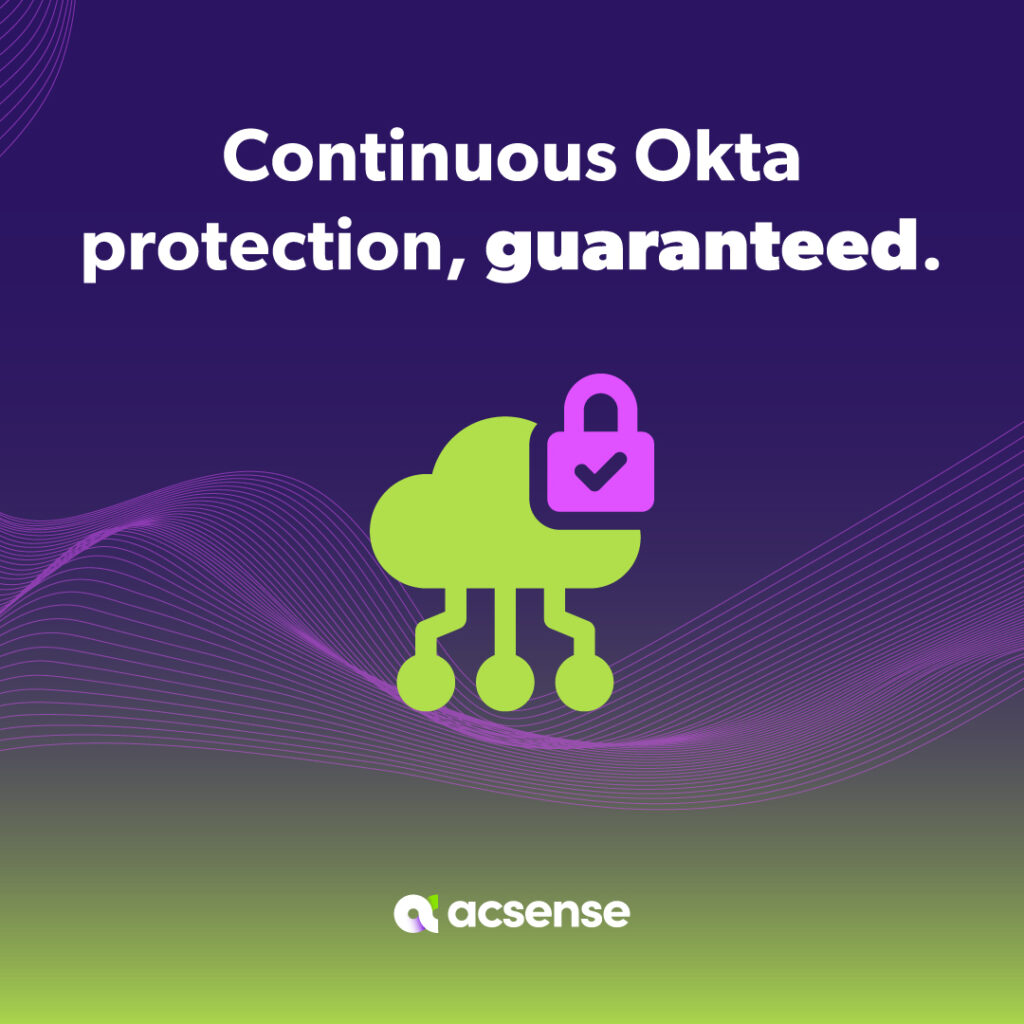Configuration Drift
In an age where technology evolves at breakneck speed, even minor discrepancies in system configurations can lead to significant challenges.
Configuration drift occurs when changes to a system are made inconsistently, resulting in deviations from an established state. Understanding this phenomenon is critical for organizations striving for operational excellence.
Configuration management plays a pivotal role in maintaining the integrity and security of IT systems across various industries. As organizations adopt more complex environments, the likelihood of configuration drift increases due to factors such as human error, software updates, and environmental changes. The implications can culminate in operational inefficiencies, heightened security risks, and unexpected financial burdens.
This article delves into the intricate world of configuration drift, exploring its causes and consequences while also providing actionable solutions. By examining best practices and cutting-edge tools for tracking and managing configuration changes, we aim to equip readers with the knowledge needed to safeguard their IT systems against drift.
Definition of Configuration Drift
Configuration drift refers to the divergence of an operating environment from its established baseline or standard configuration over time.
This discrepancy arises from various factors, including manual adjustments, human error, and software updates, leading to a state where the current configuration does not match the intended or recorded setup. The changes can affect both infrastructure and application-level settings, creating a gap between the actual state and the designated optimal configurations.
The impacts of configuration drift are related to the extent and elements altered. Marginal changes might initially go unnoticed, but can accumulate to cause significant operational issues, introduce security vulnerabilities, and trigger compliance issues. Additionally, configuration drift can lead to unexpected behavior in production environments, impacting both security teams and operations teams, and may result in higher costs due to troubleshooting and correcting the drift.
Especially within Kubernetes ecosystems, maintaining a stable, consistent configuration can be daunting due to the complexity of multiple clusters and frequent revisions by engineers. Application owners often rely on proactive approaches, employing configuration management tools, to avert or manage drift, ensuring configurations remain secure and aligned with the defined configuration standard.
| Term | Definition |
|---|---|
Configuration Drift | The deviation of an environment’s current state from its expected standard configuration over time. |
Baseline Configuration | The approved, stable versions of configurations set as a source of truth. |
Consequences of Drift | Performance issues, security gaps, compliance risks, and increased operational costs. |
Management Tools | Software or practices employed to monitor and remediate configuration changes, ensuring consistent configurations. |

Importance of Configuration Management
Configuration management stands as a cornerstone of IT stability, playing a pivotal role in safeguarding systems against disruptions and defects that can arise from untracked changes. It provides an ordered approach to handling values and settings within systems, which is crucial for diminishing the risks of system vulnerabilities.
By centralizing configuration data and exploiting the power of version control systems, like Git, teams can meticulously track alterations, keeping a consistent source of truth. This practice is instrumental in swiftly reverting to stable versions should unexpected changes cause system instability.
The utility of configuration management extends to establishing consistency and stability across IT landscapes, ensuring systems perform as designed, free from interruptions and unpredicted errors. Such a disciplined approach fosters predictability within the IT sphere, curtailing unexpected behavior and bolstering operational dependability.
Maintaining an up-to-date Configuration Management Database (CMDB) is key. It provides a consolidated perspective on the organization’s hardware and software deployments. This visibility is essential for promoting transparency and facilitating better informed decision-making in the workplace.
In essence, diligent configuration management is indispensable for a predictable and secure IT environment, and it embodies the proactive steps necessary for achieving optimized and reliable operations.
Causes of Configuration Drift
Configuration drift is a common challenge that plagues many IT environments, gradually leading systems away from their original, secure configurations. It can manifest in various ways but typically results from inadequate change management and oversight.
Let’s delve into the root causes that contribute to the phenomenon of configuration drift.
Human errors
At the forefront of configuration drift causes is human error, accounting for a significant percentage of configuration inconsistencies.
These errors can arise from a number of situations such as failure to follow established procedural guidelines during changes, lack of proper understanding, or simple mistakes that accumulate over time, slowly steering the system away from its intended baseline configuration.
CrowdStrike’s report indicates an alarming 95% increase in cloud exploitation incidents year-over-year in 2022, many of which were attributed to human errors. Operations teams attempting to manually track and rectify misconfigurations can lead to an inefficient use of time, further compounding the likelihood of additional errors. Operational human errors persist as a notable threat, even with the adoption of containers and immutable VMs in cloud environments. This underscores the continual need for practices aimed at reducing these errors to combat configuration drift.
Software updates
While undeniably critical for ensuring a system’s security and functionality, software updates themselves can inadvertently introduce configuration drift.
New network services or altered settings post-patch can result in an environment that deviates from the documented configuration standards, leading to inconsistencies. These updates are indispensable for mitigating security vulnerabilities, yet they require meticulous oversight to ensure that after their application, systems remain stable, secure, and in compliance.
The act of documenting changes during software update processes is paramount; failure to do so may lead to unrecognized configuration drift, undermining both the system’s integrity and the configuration management efforts.
Environmental changes
Environmental changes encompass a broad scope of actions, including manual interventions and ad hoc fixes, particularly in production environments where quick resolutions to outages are imperative.
However, these expedient solutions often bypass the necessary step of reflecting changes in the configuration’s documentation, resulting in drift from the baseline.
Ongoing software updates, while essential, can also contribute to configuration drift. Without careful analysis and subsequent updates to the baseline configuration, these software-induced changes can cause significant misalignment over time. Ensuring these alterations are properly assessed, recorded, and integrated into the standard configuration is critical for maintaining the integrity and reliability of IT systems.
In summary, managing configuration drift necessitates a vigilant and disciplined approach encompassing rigorous documentation, adherence to established procedures, and vigilant monitoring of changes, whether induced by human interaction or software updates.
Implications of Configuration Drift
Configuration drift is a term that refers to the divergence of an IT environment’s current state from its intended baseline configuration.
This drift can be caused by various factors, including manual interventions, automatic updates, or system modifications. Over time, these changes can accumulate, leading to a chain reaction of negative consequences. Understanding the implications of configuration drift is key to averting the associated risks that can impact system stability, security, and an organization’s bottom line.
Operational inefficiencies
Configuration drift plays a significant role in inducing operational inefficiencies within an organization.
Such discrepancies often culminate in lost productivity due to the time and resources engineers must expend in troubleshooting and rectifying unexpected behavior in both code and environments. Furthermore, it can lead to differences between the configurations of multiple environments, such as development, staging, and production, causing unreliability and delays especially during crucial deployment phases.
Operational consequences may include:
- Lost productivity: Engineers redirecting focus to troubleshoot and remediate drift.
- Extended downtime: Increased outages due to discrepancies in expected versus actual system behavior.
- Resource mismanagement: Over-provisioning and sustaining legacy workloads that inflate operational costs.
- System instability: Crashes, bugs, and performance issues making systems less dependable.
Maintaining uniform configurations is critical across all environments, enabling smoother transitions and reducing the occurrence of deployment failures that stem from configuration drift.
Security risks
The clandestine nature of configuration drift can open the floodgates to critical security vulnerabilities.
Unauthorized, undocumented changes can disrupt system integrity, increasing the risk of privilege escalation or implementing components ridden with vulnerabilities. Through such drift, backdoors or other security weaknesses may arise, inadvertently offering malicious actors an entry point into the system.
Security concerns include:
- Escalation of privileges: Unauthorized changes leading to increased system access points.
- Vulnerability exposure: Unintentional introduction of security gaps exploited by cybercriminals.
- Inconsistent deployments: Differences between development and production environments causing security gaps during deployment.
- Undocumented changes: Ad hoc changes without proper documentation hindering vulnerability mitigation efforts.
Proven cases, such as the 2020 Twilio breach, underscore the importance of rigorous configuration management to ward off risks presented by unregulated configuration deviations.
Financial burdens
The financial repercussions of configuration drift are both direct and indirect, influencing numerous aspects of a business’s operations.
Data loss and extended downtime not only wreak havoc on system availability, but they also incur substantial financial costs due to lost revenue and damage to customer trust. The ripple effect can touch numerous layers within an organization, extending from the DevOps team to the larger scope of business continuity and reputation.
Financial implications include:
- Data loss and downtime costs: Extensive financial load due to system unavailability and data recovery.
- Stakeholder impact: Effects crossing departmental lines, affecting overall business continuity and operations.
- Customer dissatisfaction: Financial loss from client attrition due to compromised service delivery and system reliability.
- CMDB Necessities: Critical need for an up-to-date configuration management database to manage and minimize drift-related expenses.
- Proactive mitigation costs: Investment in regular audits, automated monitoring, and configuration management tools to diminish financial ramifications.
In summary, a robust and systematic approach to handling configuration drift is essential to avoid the costs and risks of such drift. Proactive maintenance, documentation, and monitoring must be ingrained in the organization’s practices to sustain optimal configurations and avert the consequences of lax configuration governance.
Strategies to Mitigate Configuration Drift
Configuration drift, the gradual and often unnoticed divergence of system configurations from their intended state, can have far-reaching consequences in an organization’s IT infrastructure.
The impact spans from security breaches to server downtime and compliance violations. This drift is frequently attributed to outdated components and manual changes that inadvertently introduce security weaknesses. To safeguard against these vulnerabilities, a three-pronged strategy is imperative, encompassing the reduction of drift occurrence, swift detection of anomalies, and prompt remediation.
The cornerstone of reducing configuration drift lies in establishing and enforcing robust change management policies. These policies delineate the proper protocols for making configuration changes, thereby cutting down on human error—a principal contributor to drift. Enhancing communication within and among IT teams is equally critical, ensuring that everyone operates from a unified base of understanding regarding configuration standards.
Automation is an industry-standard tool that significantly aids in mitigating configuration drift. By fostering continuous and automated monitoring, organizations can maintain a vigilant check over configurations without overly relying on manual oversight. This process is pivotal in recognizing and addressing configuration drift in its incipient stage before it propagates and compounds into larger issues.
Tools like CIS-CAT Pro are instrumental in assessing and monitoring configurations.
They offer an in-depth view of the current state of configurations against the established security benchmarks. Regular use of such tools ensures that systems are persistently evaluated for deviations from the baseline, thus enabling organizations to stay in alignment with secure configuration practices and compliance requirements.
Proactive measures
Deploying proactive measures is the first line of defense against configuration drift.
Automated monitoring tools such as configuration management tools play an essential role in this context. They provide real-time detection and alert notifications, thereby enabling a prompt response to any detected drifts. Enforcing an Infrastructure as Code (IaC) approach is another progressive measure. IaC allows for the consistent and reproducible deployment of infrastructure, countering ad-hoc and potentially error-prone manual modifications.
In the quest for consistency, version control systems are invaluable. These systems allow the tracking of configuration file changes and the ability to maintain a historical record. Such granular visibility not only bolsters transparency but also facilitates reversion to stable versions when drift occurs. Moreover, version control serves as a source of truth for the current configuration, aiding in swift discrepancy identification.
Separating development, staging, and production environments is a strategic move that benefits system integrity. Such separation ensures that experimental changes are tested and refined before reaching the production environment, ultimately preserving its stability and security.
Reactive strategies
Despite preventive measures, configuration drift can still occur.
Reactive strategies are, therefore, necessary to address drift events effectively. Like proactive tools, reactive strategies often utilize automated monitoring, offering real-time drift surveillance and issuing alerts to help quickly pinpoint and resolve drift issues.
Version control systems again come into play, providing a secure fallback position. Should drift be detected, teams can track the exact changes causing the issue and revert configurations to their last known good state. This quick restoration capability is crucial in minimizing the impact of drift on operations and security.
Implementing secure configurations and regularly revisiting them ensures a continuous defense against further drift. Configuration assessment tools such as CIS-CAT Pro support these efforts by monitoring configurations over time and confirming that systems remain within their desired secure parameters.
A comprehensive cybersecurity program complements reactive strategies by fostering continuous awareness and validation of secure configurations, ultimately aiding in the swift and effective mitigation of configuration drift consequences. This kind of program is essential for keeping drift effects in check and ensuring that the organization’s IT frameworks operate within secure and compliant boundaries.

Best Practices for Configuration Management
Best practices in managing configuration are vital to avoid the notorious and precarious instance of configuration drift. Configuration drift can cause unexpected behavior, security vulnerabilities, and compliance issues which impact the stability of delivery systems.
To combat this, here are some crucial strategies:
- Robust Change Management: Implement a tightly controlled change management process, where all configuration changes undergo structured approval, bolstering your system’s accountability and minimizing risks.
- Automated Monitoring: Leverage configuration management tools such as Chef, Puppet, Ansible, and AWS Config. These tools automate the monitoring and logging of configuration changes, leading to improved detection capabilities and reduced human error.
- Manual Audits: Complement automation with regular manual audits. This ensures even the parts not covered by automated tools—often found in complex network environments—are accounted for.
- Baseline Configuration: Define and maintain a baseline configuration for each system and application type. This sets a standard to measure against, ensuring secure configurations and facilitating quicker restoration to a known, stable state.
- Feedback Loop: Forge effective communication channels among DevOps teams, operations teams, and application owners. This collaborative approach helps in aligning changes, managing stable versions, and upholding consistent configurations.
By implementing these practices diligently, organizations can sustain an optimal production environment that aligns with configuration standards, offering a proactive approach to managing configurations over time, reducing operational costs, and ensuring secure and consistent operations.
Tools and Technologies for Tracking Configuration Drift
Configuration Drift represents a significant challenge for both operations and security teams, as it can lead to security vulnerabilities and compliance issues.
Implementing and relying on advanced Configuration Management tools is essential in combating configuration drift and maintaining secure, stable versions of network devices and systems.
Key tools such as Chef, Puppet, Ansible, AWS Config, and Google Cloud Asset Inventory offer powerful capabilities for tracking and managing configurations. These tools continuously monitor resources, log changes, and alert teams to deviations from the baseline configuration. This ability to track adjustments over time helps ensure that the production environment remains within the configuration standard.
A well-managed cybersecurity program leverages these tools to automate monitoring and establish an ironclad source of truth for system configurations. Regularly auditing systems against their documented, optimal configurations allows application owners and the DevOps team to proactively address deviations and maintain consistent configurations.
Automation plays a pivotal role in sustaining these efforts, offering a proactive approach that diminishes human error and the potential impact of configuration drift. It ensures delivery systems are updated with secure configurations, thereby reducing the costs associated with inconsistencies.
Configuration Management Tools | Functionality |
|---|---|
Chef, Puppet, Ansible | Automate configuration tracking, apply secure configurations |
AWS Config, Google Cloud Inventory | Record and alert configuration changes, enforce compliance standards |
By integrating these tools into a comprehensive drift management strategy, operations teams can ensure that the current configuration aligns with the core requirements, achieving high levels of stability and security.
Future Trends in Configuration Management
Configuration drift not only poses a significant risk to system stability, resulting in erratic system behavior or outright failures but also jeopardizes availability of services. Mitigating these risks through effective configuration management is essential in maintaining resilient IT systems and minimizing potential system vulnerabilities.
An important factor in preserving system harmony is continuous monitoring of configuration drift to ensure uniformity across various software environments. Such attention to detail enhances both productivity and the overall user experience. The use of a configuration management database (CMDB) aids in achieving this by providing a centralized repository for information on all network hardware and software installations, thus offering the needed transparency and visibility.
Looking to the future, the integration of automation within configuration management systems stands out as a promising trend. Automation introduces predictably managed IT environments, decreasing the likelihood of unexpected system behaviors. This is especially beneficial for business continuity and disaster recovery strategies, as it enables organizations to operate consistently and efficiently.
By adopting such proactive techniques, companies can look forward to more stabilized, secure configurations which align with optimal operational practices.
Why Choose Acsense for Okta Configuration Management?
- Streamlined Workflows: Navigate through your IAM configurations with an intuitive interface and seamless integration points.
- Error Reduction: Our tools are designed to minimize the chance of human error, ensuring reliable and consistent configuration management.
- Time Efficiency: Save time with quick replication and deployment features, allowing you to focus on strategic tasks.
Take Control of Your Okta Environment
Adopt Acsense Configuration Management and bring unmatched efficiency and control to your IAM systems. Protect your setups with continuous data protection and backup capabilities, integrated within the Acsense platform.
Connect with us to learn more, schedule a demo, or get started with Acsense today.

